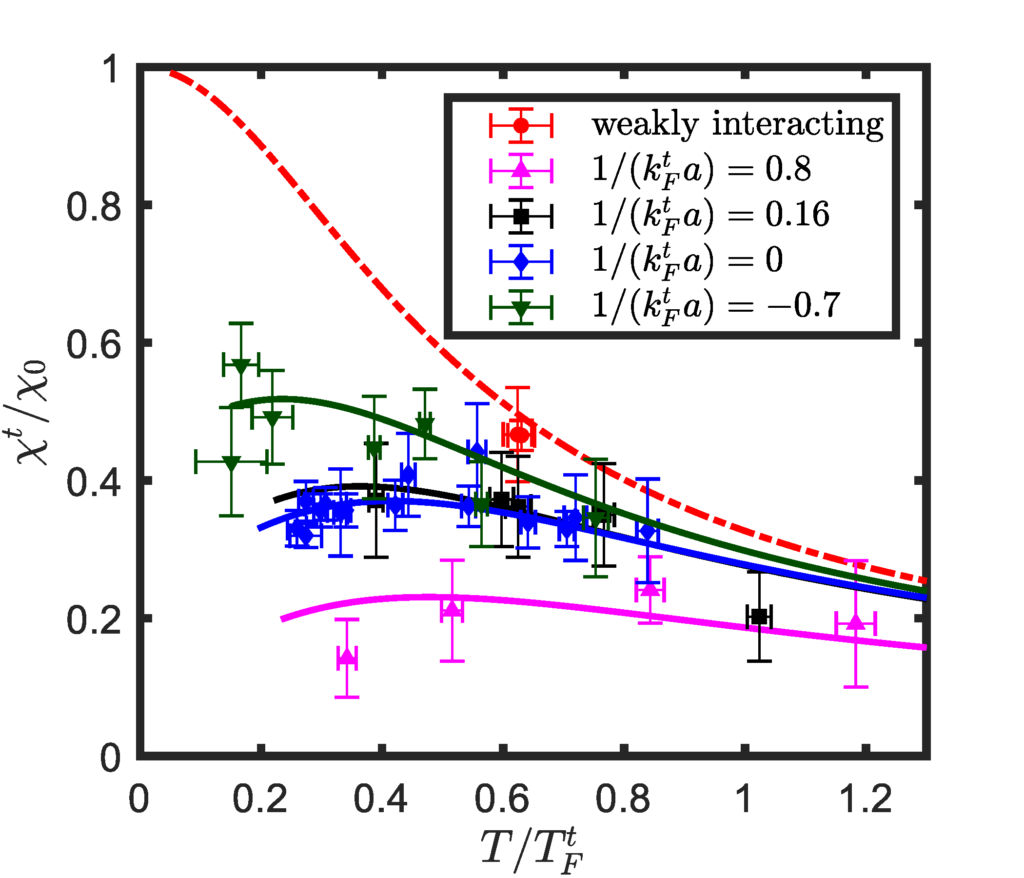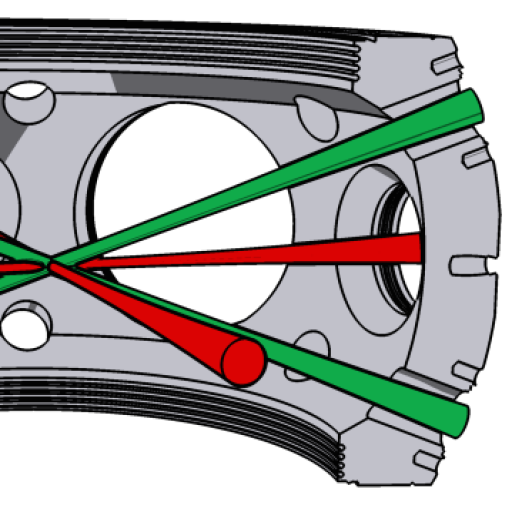In a new paper published in Physical Review Letters, we have developed and deployed a novel method to determine the spin susceptibility of ultracold Fermi gases. These gases are created by cooling lithium atoms to less than 1 millionth of a degree Kelvin – a temperature low enough that the dilute gas of atoms takes on many of the same quantum properties as the electron gas found in metals and oxides. It is already established that in these gases, some of the same quantum effects such as superfluidity are possible (for electrons this is called superconductivity because the electrons carry charge, while our lithium atoms do not). However, questions remain about the differences. By applying a combination of radio waves and a magnetic field gradient, we are able to introduce a difference in the population of two spin states, in effect measuring a property known as spin susceptibility, for a variety of temperatures. We found that the changes of spin susceptibility with temperature were surprisingly simple to model, unlike similar changes in material systems, where an anomalous decrease upon cooling is observed, even before the superfluid transition is reached. The figure below shows the trap averaged spin susceptibility compared to the theoretical non-interacting value, as a function of the scaled temperature. For more details check out the paper (link at the top).

